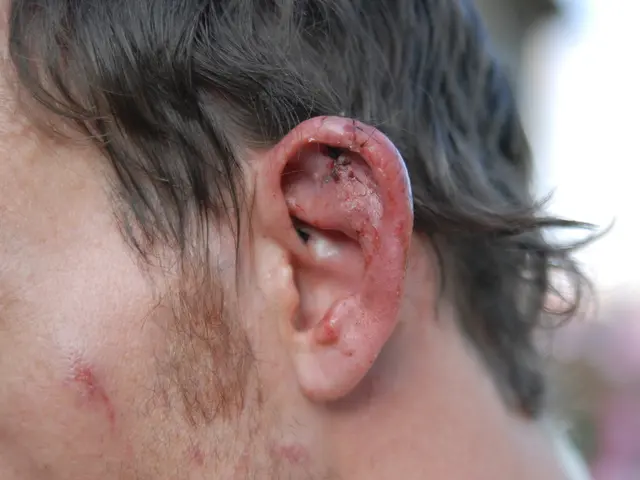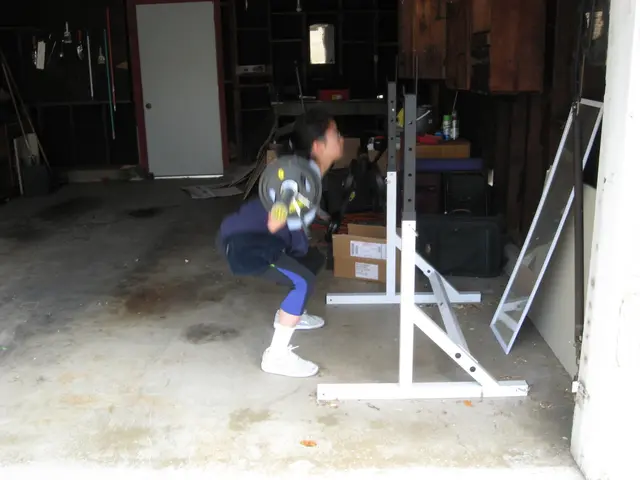Exercising Outdoors with Raynaud's Syndrome: Tips to Prevent Frostbite on Your Fingers
When Amanda Katz, an NYC-based strength and running coach, embarked on outdoor runs during winter in her early 30s, she found standard gloves offered scant protection against freezing hands. Finger and toe numbness, followed by episodes of throbbing pain when her extremities warmed up again, were all-too-common for this health-conscious woman.
It wasn't until she visited a podiatrist for an unrelated issue that Katz was diagnosed with Raynaud's syndrome – a condition characterized by cold-triggered spasms of the blood vessels in the extremities, resulting in discoloration and painful symptoms.
Understanding Raynaud's Syndrome
In individuals with Raynaud's syndrome, exposure to cold, stress, or other triggers causes microvessels in the fingers, toes, and sometimes other areas like the nipples and nose, to contract, restricting blood flow. This results in white, bluish discoloration, stiffening, and oxygen deprivation of the affected areas.
Raynaud's syndrome expert Dr. Amanda Sammut, the Chief of Rheumatology at Harlem Hospital and an Assistant Clinical Professor of Medicine at Columbia University, describes the condition: "When the blood begins to flow back into my fingers, it feels like they're being smashed in a door."
While its causes remain elusive, Raynaud's is more prevalent in women than men, and a family history may exacerbate the risk[1]. In most cases, it manifests as primary Raynaud's, a condition unlinked to other health issues.
In some instances, however, Raynaud's develops secondary to other health conditions, particularly autoimmune ones like lupus or scleroderma[4]. When this happens, the condition is more likely to lead to serious complications like frostbite or gangrene, making it essential to consult a doctor promptly.
Approximately 5% of the population experiences Raynaud's symptoms, with onset most commonly occurring in the 30s[5]. Symptoms can range from mildly annoying to debilitating for those who enjoy cold-weather activities, inspiring individuals like runner and sports dietitian Holley Samuel to relocate to a warmer climate temporarily.
So, whether you opt for a new locale or stick to your current one, follow these 12 tips to keep Raynaud's in check as you pursue the outdoor activities you love.
1. Weather Prowess
Track weather conditions to plan workouts during the warmest part of the day, and familiarize yourself with the gear appropriate for the conditions, as everyone with Raynaud's has a unique temperature threshold[1].
2. A Warm Core, a Happy Periphery
Layer carefully to insulate your core, as a colder body can worsen the peripheral blood vessel spasms[1].
3. The Art of Layer Gloves
Layer gloves to trap warmth, experimenting with various combinations like wool inner layers paired with windproof or puffy outer layers. Some runners prefer mittens, lobster gloves, or sock-like gloves to consolidate finger heat[1].
4. Inner Warmth
Insert disposable or reusable hand warmers between the glove layers, or invest in heated gloves or mittens with built-in components[1].
5. Stay Active
Keep your hands moving, employing techniques like fist-curling and wrist-winding during your run to improve blood flow[1].
6. Foot Warmers
Don thermal socks in colder weather, and explore options like toe warmers, heated insoles, heated socks, or heated ski boots[1].
7. Deep Breaths
Practice relaxation techniques and breathe deeply to manage stress, as emotional triggers play a role in Raynaud's attacks[1].
8. Energize with Carbs
Ensure proper fueling, emphasizing carbohydrates, as undernourishment may exacerbate symptoms[1].
9. Stay Hydrated (but mind the temperature)
Stay hydrated, avoiding icy beverages to prevent a cooling effect on your core[1].
10. Warm Down Gradually
Allow your body time to thaw after exercise by cooling down gently and initiating a warm shower immediately upon returning indoors[1].
11. Hold Back on Post-Workout massages
Power tools like massage guns may exacerbate Raynaud's, as they could trigger similar responses due to vibrational effects on blood vessels. Delegate massages when possible to avoid overstimulation[1].
12. Medication
If lifestyle approaches prove insufficient, consult a doctor about medication options. Calcium channel blockers (to lower blood pressure) or vasodilators like sildenafil (Viagra) may help relax peripheral blood vessels and alleviate symptoms[1].
[1] https://www.mayoclinic.org/diseases-conditions/raynauds-disease/symptoms-causes/syc-20354206[2] https://www.mayoclinic.org/diseases-conditions/raynauds-disease/diagnosis-treatment/drc-20354230[3] https://www.ncbi.nlm.nih.gov/pmc/articles/PMC5821977/[4] https://www.ncbi.nlm.nih.gov/pmc/articles/PMC4417196/[5] https://www.ncbi.nlm.nih.gov/pmc/articles/PMC3701912/
- Amanda Katz, a strength and running coach, was diagnosed with Raynaud's syndrome, a condition that causes cold-triggered spasms of blood vessels in the extremities.
- In individuals with Raynaud's syndrome, exposure to cold, stress, or other triggers can lead to white, bluish discoloration, stiffening, and oxygen deprivation of the affected areas.
- Raynaud's syndrome can be more prevalent in women and a family history may exacerbate the risk, but it can also develop secondary to other health conditions like autoimmune ones.
- For those with Raynaud's syndrome who enjoy outdoor activities, tracking weather conditions and planning workouts during the warmest part of the day, layering, and using hand and foot warmers can help manage symptoms.
- Practicing relaxation techniques, deep breathing, and staying hydrated can also help manage stress, a known trigger for Raynaud's attacks.
- In some cases, lifestyle approaches may not be sufficient, and individuals may need to consult a doctor about medication options such as calcium channel blockers or vasodilators.






